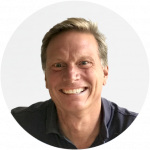https://www.facebook.com/quantumsorter/videos/1281496401983728/
The second Q-SORT Interdisciplinary Training Webinar touches upon the following topics:
– low-dose imaging in electron microscopy
– multi-pass TEM
– live-cell electron microscopy
– phase-contrast electron microscopy
– quantum coherence
– entanglement of electrons
– quantum electron microscopy
– quantum Zeno effect
– dark-field microscopy
– ptychography.
One of the most important issues in electron microscopy is the so-called “dose problem”, that is to say the fact that many samples of interest, such as biological systems, are so sensitive to the number of electrons hitting them that they are easily destroyed or damaged. The idea of multi-pass electron microscopy is to increase the signal-to-noise ratio of the microscope not by sending more electrons through the sample but instead by making few electrons pass through the sample more than once. This allows one to increase the phase signal, which is the main effect that objects such as proteins have on the electron wavefunction: in other words, many biological systems of interest have little effect on the amplitude of the electron wavefunction but impart on it a significant phase – the multi-pass approach allows one to improve this phase signal.
The webinar illustrates one of the approaches being pursued in order to achieve multi-pass electron microscopy. It delves into the technicalities involved in its implementation and summarises the recent efforts in this field by the group of Prof. Kasevich at Stanford, which at present (June 2018) is the only one in the world to have built such a machine.
The talk also touches upon other topics related to the idea of a quantum electron microscope. The latter is an even more revolutionary concept, which, thanks to the peculiarities of quantum mechanics, allows for interaction-free measurements. Due to the nature of its working principle, such measurements, however, are limited to the silhouette of the sample under observation.
The webinar is aimed at:
– spreading awareness amongst physicists of the new possibilities afforded by multi-pass techniques
– exchanging ideas between scientists for furthering joint research
– promoting dialogue between the physics and biology/biochemistry communities, establishing a
common language between the two disciplines.
About the speaker

Mark Kasevich is a Professor of Physics and Applied Physics at Stanford University. He received his B.A. degree (1985) in Physics from Dartmouth College, a B.A. (1987) in Physics and Philosophy from Oxford University as a Rhodes Scholar, and his Ph.D. (1992) in Applied Physics from Stanford University. He joined the Stanford Physics Department faculty in 1992. From 1997-2002 he was a member of the Yale Physics Department faculty. He returned to Stanford in 2002. His current research interests are centered on the development of quantum sensors of rotation and acceleration based on cold atoms, application of these sensors to tests of gravitation and quantum mechanics, investigation of many-body quantum effects in cold atomic vapors, and investigation of quantum-enhanced imaging methods. He co-founded AOSense, Inc. (2004) and serves as the company’s Consulting Chief Scientist
